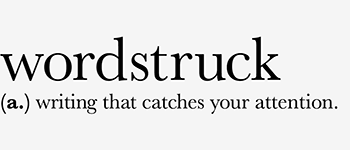I’m always on the look out for creative events. Earlier this year I spent a brilliant day at the Edinburgh Book Festival where I got to see and listen to one of my favourite fiction writers Neil Gaiman in conversation. And then spend an evening with two writers who seek to put the creative into business, John Simmons and Jamie Jauncey.
Some time ago I spotted the Newcastle Winter Book Festival and searched the web site for interesting events and workshops. Unfortunately many took place when I was at work, but a competition caught my eye. Writers were invited to submit a short piece of prose or poetry on the theme of myth and metaphor.
I haven’t done a lot of creative writing recently, but I knew I had a poem that would fit the bill. As I trawled through my archive of writing, I stumbled across an even earlier prose piece, written over 4 years ago, while I was at Moniack Mhor near Inverness on an Arvon writing course.
I gave it another look and it still made me smile. So I dusted it down, gave it a light editing and sent it away with barely another thought.
I’d practically forgotten about it until I get an email last week, telling me that my piece, entitled Jabberwocky, had been shortlisted and I was invited to an evening of poetry readings at which the winner would be announced.
And so I found myself for the first time in the Star and Shadow cinema. A quirky little place, cobbled together. A ramshackle building brought to life behind a magic painted door.
We stepped into a candlelit room, of small tables and a platform stage. With jazz playing, we snuggled into a welcoming sofa, not knowing quite what to expect.
We didn’t have long to wait for the big announcement. My piece came an honourable third place. No prize save the honour of a round of applause and an embarrassed bow. The winning short story was read on stage – an atmospheric tale with dramatic dialogue.
And then we listened to a small group of poets read from their work. Conjuring up images of cricket matches and workers in overalls, singing a paean to Tuesday, making us smile, making us think.
The last poet to take to the stage was Liz Lochead, the Makar or national poet of Scotland. Her rich accent bringing to life the sounds of her native land, she had a twinkle in her eye and a rich vein of dark humour in her work. It was a pleasure to hear her, not so much read as recite from memory her poems, like a bard of old.
I enjoyed revisiting my old creative work and remembering that special week of inspiration and writing in Scotland. As the dark nights draw in, it feels like the perfect time to revisit old tales and stories again.


 When it comes to writing clear communications, imagine you’re writing for a quality newspaper or news website.
When it comes to writing clear communications, imagine you’re writing for a quality newspaper or news website. It’s easy, particularly when you know your subject really well to get wrapped up in what you’ve written, to lose perspective. Take some time to away from it and come back with new eyes.
It’s easy, particularly when you know your subject really well to get wrapped up in what you’ve written, to lose perspective. Take some time to away from it and come back with new eyes.